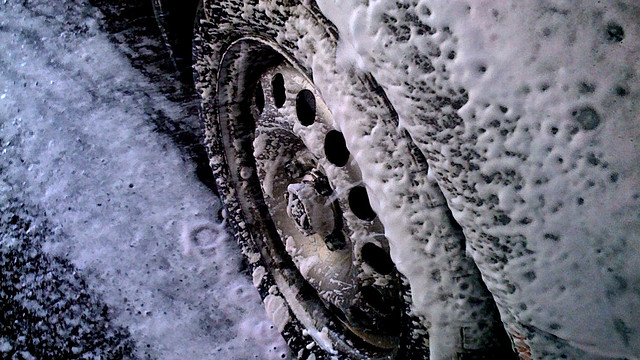The future holds a lot for the motor vehicle, with the beginnings of 3D printing already taking root in households, plenty of Bluetooth gadgets allow greater connectivity with our mobile devices, and new painting coatings provide less work when cleaning. Let’s take a look at how you’ll be able to hack your car to do even more in the near future.
Photos by Nelson Marquez (Shutterstock) and bark
You’ll (Sometimes) Print Spare Parts

With the proliferation of 3D printers, more and more people are beginning to download and print their own car parts. This is not only a benefit to those who want the convenience and the cost savings (presuming you don’t count the high price of the printer itself), but to owners of older vehicles who need parts no longer manufactured. It’s not a perfect approach. 3D printing produces plastic — a material that generally won’t last as long in a vehicle. However, the future holds a lot of promising possibilities. Forbes explains how this new technology will go even further than just tiny pieces of a vehicle:
3D printing will manufacture vehicle parts and even whole cars. High-end, specialty cars that have relatively small production runs will particularly benefit. Bentley is one company that has already demonstrated the feasibility of using 3D printing for small, complex parts. Motorcyclists and bikers will also be able to order their own customised helmets that are printed to fit their individual head size and structure.
But what about the materials? Right now plastic isn’t a prime choice for just about anything, but companies are already looking at using liquid metal, which will provide a lightweight, more durable alternative. We’ll see even more options if they manage to make graphene a viable material, as it’s essentially a flexible, durable, conductive plastic. While we’ll see these technological leaps in manufacturing long before we’ll have the options in our homes, 3D printers are the way of the future and offer several DIY possibilities for car hackers.
You’ll Use Your Smartphone (Sort Of) Safely
You can already talk to your smartphone with a push of a button and the latest Android phones even allow an ongoing, touch-free conversation. That will only improve in the coming years and make driving safer. But what about when you have to actually look at the display or get information from your car? We’re not far off from upgrading safety in that department, either.
HeadsUp already intends to make checking your phone safer by mid-2014. It plans to provide an easily-installable product that mirrors important information from your smartphone on your windshield. While glancing away from the road ahead is never safe, it’s a lot safer to shift your eyes down for a split second than to look straight down. Since you generally need to look lower to change the radio or the temperature in your vehicle, checking an alert on your windshield should prove less hazardous.
As for gaining information from your car, we’ve already made some progress with the Automatic Link, which communicates with your smartphone in order to track your mileage, the location of your vehicle, how well you’re driving, and if any issues arise. You can already get a lot of information from generic Bluetooth-enabled OBD2 sensors like Automatic, and use existing apps to read the data. As car technology progresses, we should be able to monitor even more data and automatically find out about fixable problems before they occur.
Your Car Will Heal And Clean Itself

You’ve probably heard of RustOleum Neverwet, a coating that very little will stick to. If you coated a shoe with the stuff and squirted mustard on it, the mustard would just fall off. You can actually buy this amazing substance already, but it’s just the beginning. What if you never (or, at least, rarely) ever had to clean your car again? Or touch up small scratches? The folks over at GizMag found out this isn’t too far off:
Researcher Catarina Esteves of the department of Chemical Engineering and Chemistry at TU/e and her colleagues claim to have solved this problem with the development of surfaces that place the functional chemical groups at the end of special “stalks” that are mixed through the coating. When the outer surface layer is removed by scratching, the “stalks” in the layer underneath re-orient themselves to the new surface to restore their function.
The researchers say this will enable the creation of highly water-resistant coatings that could be applied to cars so that superficial scratches heal themselves and water droplets roll off the car, taking dirt with them.
We’ll see these coatings on newer vehicles first, of course, but those of us with appropriate knowledge and skill set will be able to apply it ourselves in the future. While car enthusiasts probably won’t want to trust the coating to keep their vehicles spotless, it will help reduce the amount of work in the beginning. Hopefully in the next decade we’ll have the option of never washing our vehicles again.
Usually at Lifehacker, we only talk about the tips and tricks you can use right now. This post is a part of a an ongoing series that breaks that rule: it’s all about the future of life hacking. In it, we’ll explore what we expect to be able to do better in the next three, five and 10 years.

Comments